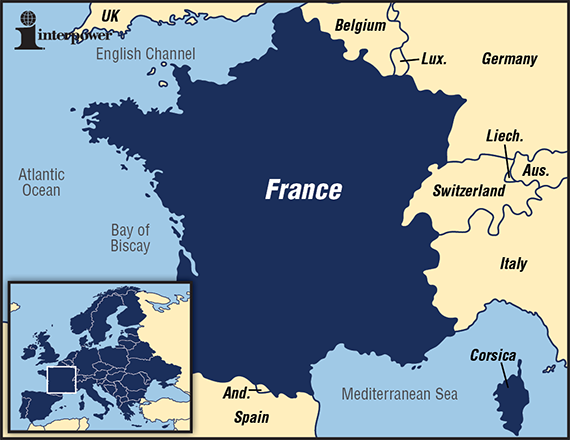Exporting to France

| FRANCE | |
|---|---|
| Actual population* | Population world ranking |
| 66,259,012 | 22 |
| Actual GDP (PPP)* | GDP world ranking |
| $2.276 trillion | 10 |
| Actual GDP (per capita)* | GDP (per capita) world ranking |
| $35,700 | 39 |
*See the end of this blog for definitions
Notable trade and investment opportunities exist in France, making this country a key player in the global market. With a modern business climate and wide-ranging consumer base, France works to promote economic growth.
As a member of the European Union, France is a developed nation with a diverse and extensive consumer base. While the French market is similar to others in a number of ways, it should be noted that French customers have their own unique tastes and knowledge of those preferences is essential in doing business with them. While a favorable business environment exists, careful planning of the market entry strategies is important to a company’s success.
When considering the French business culture, know that the emphasis is on courtesy and formality. Appointments and titles are to be respected. It’s important to know the correct way to correspond as well as how to open and close a business meeting. Discover ways to enhance good working relations.
There are a number of resources available to assist a company with market research and market entry strategies, including the United States Commercial Service and the United Kingdom Trade and Investment. There is also a reference guide called “Doing Business in France” that is created by the Business France Agency.
Located in Western Europe, France joined the European Union in 1958 and was one of the original EU member countries. The EU is a Customs Union which consists of member countries who have formed a single region for customs purposes. Goods that have been imported legally can circulate throughout the EU with no further customs checks. To learn more about the customs regulations, among the sources to consult are the European Commission Export Helpdesk and European Commission Taxation and Customs Union. Conducting due diligence in accordance with all of the regulations is essential.
Some products may require safety testing and certification for this market. While not all products are required to have a CE mark, others do require one. When affixing the CE mark to a product, a manufacturer affirms that the product meets the necessary requirements and can be sold throughout the EU.
There are also EU regulations that need to be followed, so it’s important to know what is required in France. Among them are:
- REACH is the European regulation for Registration, Evaluation, Authorization, and Restriction of Chemicals. The European Commission works closely with ECHA (European Chemicals Agency) in the implementation of this regulation.
- RoHS stands for Restriction of Hazardous Substances. It restricts the use of certain hazardous materials found in electrical and electronic products.
- WEEE stands for Waste from Electrical and Electronic Equipment. WEEE requires the treatment, recovery, and recycling of electric and electronic equipment.
While many business people may speak English, French is the official language in the country. It is recommended that written information, such as product literature, be in French.
In France, the voltage used is 230V at 50Hz. The most frequently specified plug pattern is the Continental European plug with a French/Belgian socket.
Sources:
www.export.gov/france
www.gov.uk
http://sayouitofrance-innovation.com
Sources for the European Union:
www.ec.europa.eu
www.echa.europa.eu
www.rohsguide.com
www.exporthelp.europa.eu
www.europa.eu
www.export.gov/europeanunion
*Source: www.cia.gov/library/publications/the-world-factbook/index.html
Country comparison—Population: Population compares estimates from the US Bureau of Census based on statistics from population censuses, vital statistics, registration systems, or sample surveys pertaining to the recent past and on assumptions about future trends. (July 2014 est.)
Country comparison—GDP (Purchasing Power Parity): GDP (purchasing power parity [PPP]) compares the gross domestic product (GDP) or value of all final goods and services produced within a nation in a given year. A nation’s GDP at PPP exchange rates is the sum value of all goods and services produced in the country valued at prices prevailing in the United States. (2013 est.)
Country comparison—GDP – per capita (PPP): GDP – per capita (PPP) compares GDP on a purchasing parity basis divided by population as of 1 July for the same year. (2013 est.)






